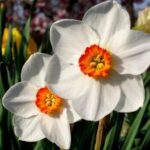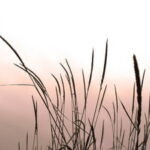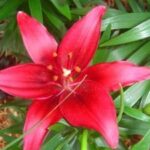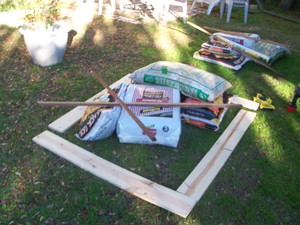For the flower gardening enthusiast, an English garden is a view of landscaping heaven. With little or no grass, the yard is an abundance of flowers sometimes tall enough to hide a precocious child. Varying height blooms of reds, yellow, blue, pink, lavender or orange create a rainbow color explosion. To augment the landscape design, add garden features such as a winding walkway or a gazing ball almost hidden by flowers and foliage. Your English cottage garden project may be a small grouping of flowers or include landscaping structures, outdoor furniture or lawn ornaments.
Vertical Landscaping Structures
A trellis, arbor or pergola adds height to the garden. These landscape structures provide support for climbing plants. Secure a flower trellis to the side of a structure, like the house or garage. Place three trellis side-by-side for added impact that can also disguise an unpleasant view. Place an arbor at the entrance to the flower garden or across the walkway within the garden to create a destination shaded by the flowers growing overhead. A pergola over a patio creates a room-like affect in the garden. Climbing plant options for vertical landscape structures include: Chinese wisteria (Wisteria sinensis), blue passionflower (Passiflora caerulea), trumpet vine (Campsis x tagliabauana, wedding day rambling rose (Rosa e.g.), or perennial pea (Lathyrus latifolius).
Horizontal Landscaping Structures
Install a series of trellis horizontally on a wall for a band of color. Leave the trellis with no plantings or painted in a bright color like blue or yellow to make a statement in the garden. Flowering plants, like those listed under “vertical landscaping structures” (above), are an option for the trellis. Another option for the trellis is non-flowering vining plants like evergreen English ivy (Hedera helix). A wood rail or white picket fence is typical in English garden landscape design. Flowers may almost block the fence from view. To get the best value, choose a perennial plant like peony (Paeonia hybrids) or purple coneflower (Echinacea purpurea) for a sunny location or astilbe (Astilbe x arensdsii) or Siberian iris (Iris sibirica) for a shady location. Every three to four years, dig up the perennials and divide them to create more plants. Add other flower varieties of varying heights to create waves of color.
Outdoor Furniture and Lawn Ornaments
A single outdoor chair is suitable but why not have two or more chairs to enjoy your cottage flower garden with friends? The style of chair may be antique or rustic looking and may be made of wood, metal, wicker or synthetic materials that look like wood or wicker. Alternatively, consider a solitude stone bench for quiet contemplation. Highly scented flowers like roses or lavender are ideal plantings near a seating area.
Toss whimsy into the landscape design by adding lawn ornaments such as a gazing ball or garden gnome. Place the lawn ornament partially hidden within the flowers. Other options for garden decoration may include birdbath, birdhouse, obelisk, statue, specialized stepping stones, or lighting for nighttime enjoyment.
Planting Concepts
Most any flower or herb you like can be a part of your cottage garden landscape design. Choose annual or perennial plants suitable in your area such as those available from local home and garden centers. Shrubs and small trees, including fruit trees, are also included in cottage garden design. The key is to repeat groupings of flower colors throughout the garden.
Sources: Dave’s Garden; Texas A&M; University Extension: Designing the Country Cottage Garden









